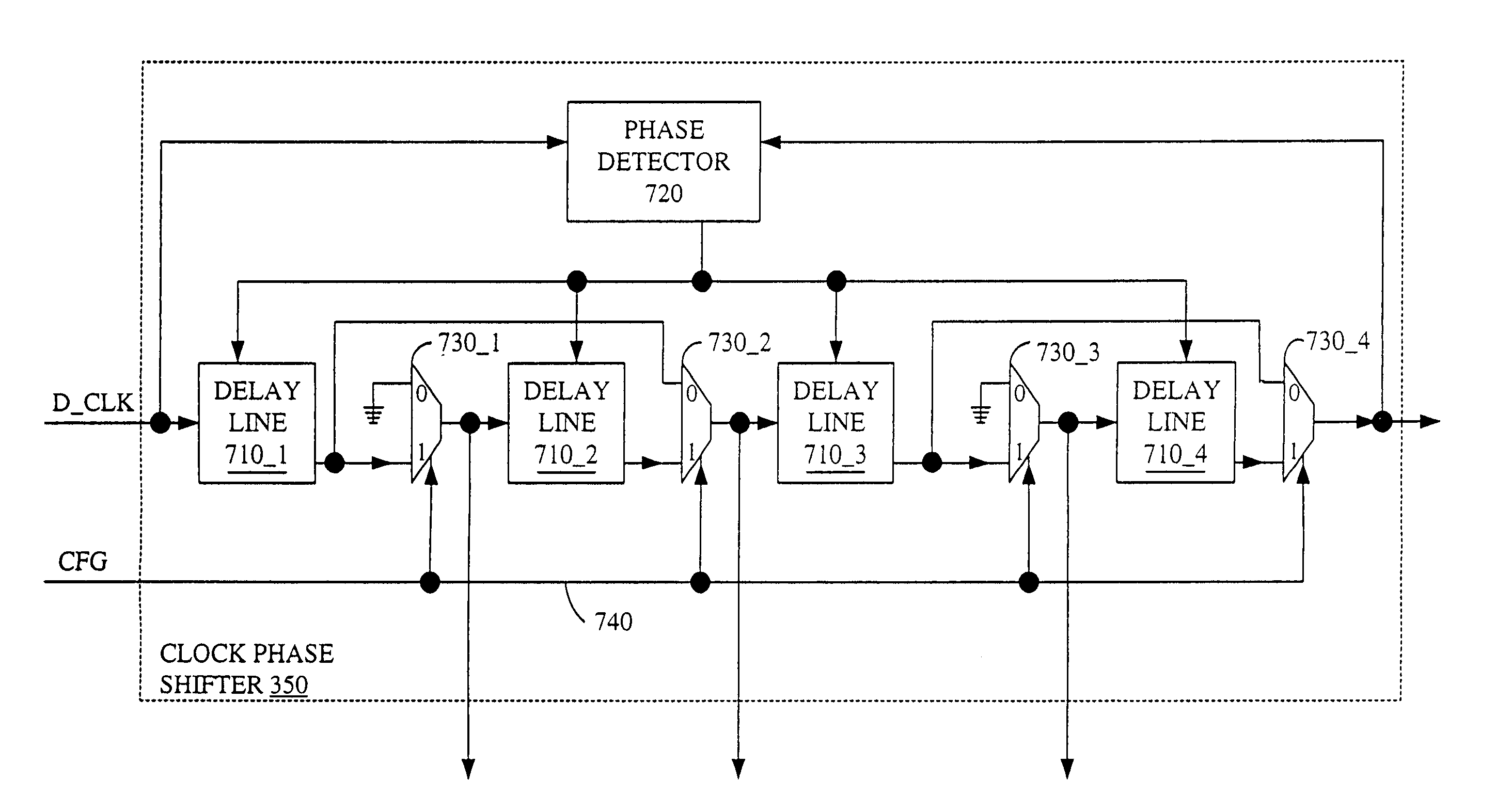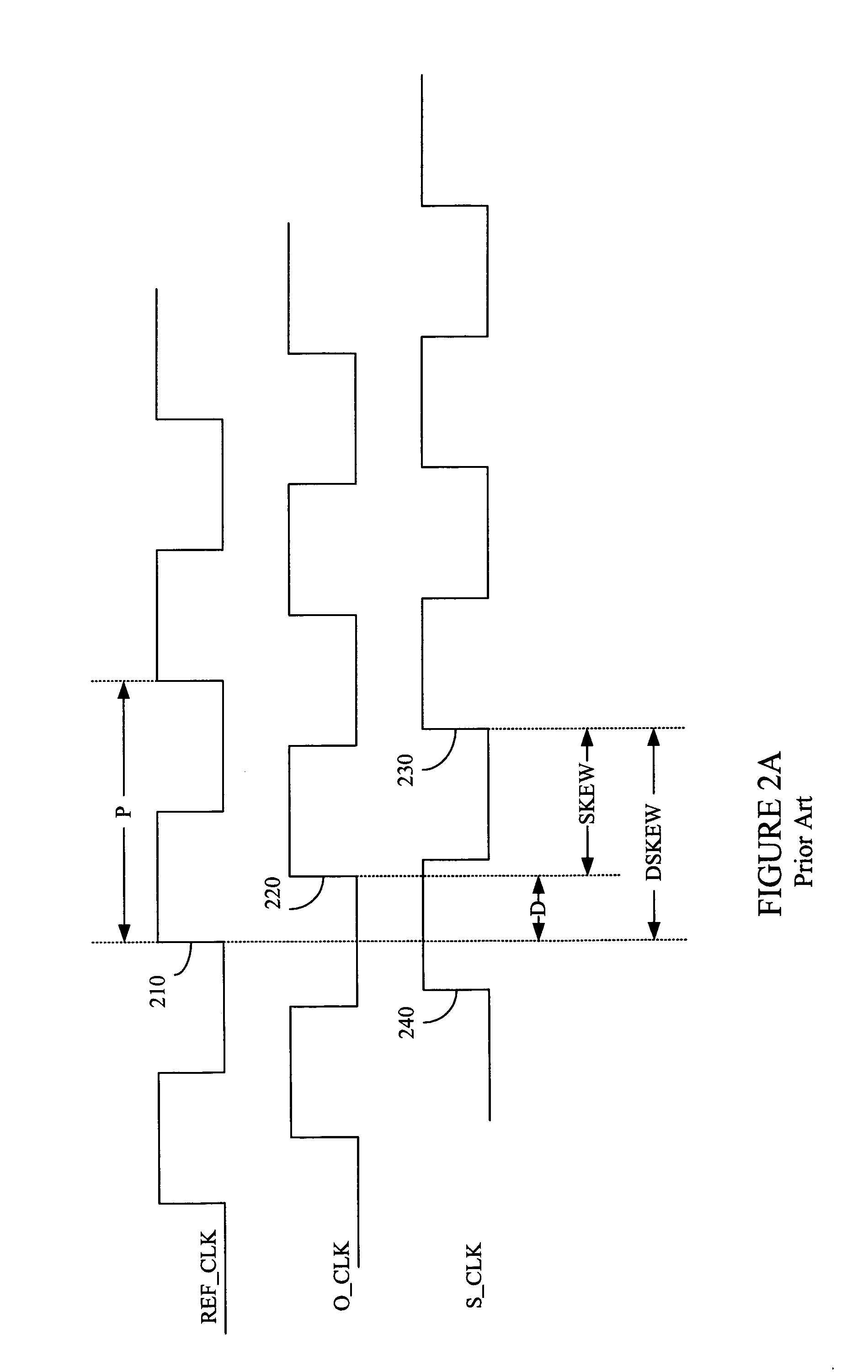Digital spread spectrum circuitry
a digital electronics and spread spectrum technology, applied in the direction of generating/distributing signals, pulse automatic control, angle demodulation by phase difference detection, etc., can solve the problems of digital systems malfunctioning, not capturing the data from the first, rising edges of clock signals in different parts of the system may not be synchronized, etc., to increase the frequency range and increase flexibility
- Summary
- Abstract
- Description
- Claims
- Application Information
AI Technical Summary
Benefits of technology
Problems solved by technology
Method used
Image
Examples
Embodiment Construction
APPENDIX ACORRESPONDING TERMINOLOGY USED INTERMINOLOGYTHE SPECIFICATIONDLLDelay Lock Loop 400ZD2 sectionClock Phase Shifter 350PS sectionDigital Phase Shifter 1100ZD1 sectionDelay Line 310ResetZD2Reset Clock Phase Shifter 350ResetPSReset Digital Phase Shifter 1100ResetZD1Reset Delay Line 310ChangeZD2When asserted, allows Clock Phase Shifter 350 tomake a tap / trim changeGoPSGO (when asserted, allows Digital Phase Shifter tomake a tap / trim change)ChangeZD1When asserted, allows Delay Line 310 to make a tap / trim changeDLL_lockedDLL_LOCKEDlocked_preSimilar to DLL_LOCKED, except it remains trueeven if overflow occursPSlockedWhen asserted, indicates that the initial tap / trim fordelay line 1304 has been setFREEZEDLLUser signal that holds all updates to delay lines inDelay Lock Loop 400EnZD2Configuration bit that enables Clock Phase Shifter 350(allows ResetZD2 to go inactive)EnPSConfiguration bit that enables Digital Phase Shifter1100 (allows ResetPS to go inactive)EnZD1Configuration bit that...
PUM
 Login to View More
Login to View More Abstract
Description
Claims
Application Information
 Login to View More
Login to View More - R&D
- Intellectual Property
- Life Sciences
- Materials
- Tech Scout
- Unparalleled Data Quality
- Higher Quality Content
- 60% Fewer Hallucinations
Browse by: Latest US Patents, China's latest patents, Technical Efficacy Thesaurus, Application Domain, Technology Topic, Popular Technical Reports.
© 2025 PatSnap. All rights reserved.Legal|Privacy policy|Modern Slavery Act Transparency Statement|Sitemap|About US| Contact US: help@patsnap.com



